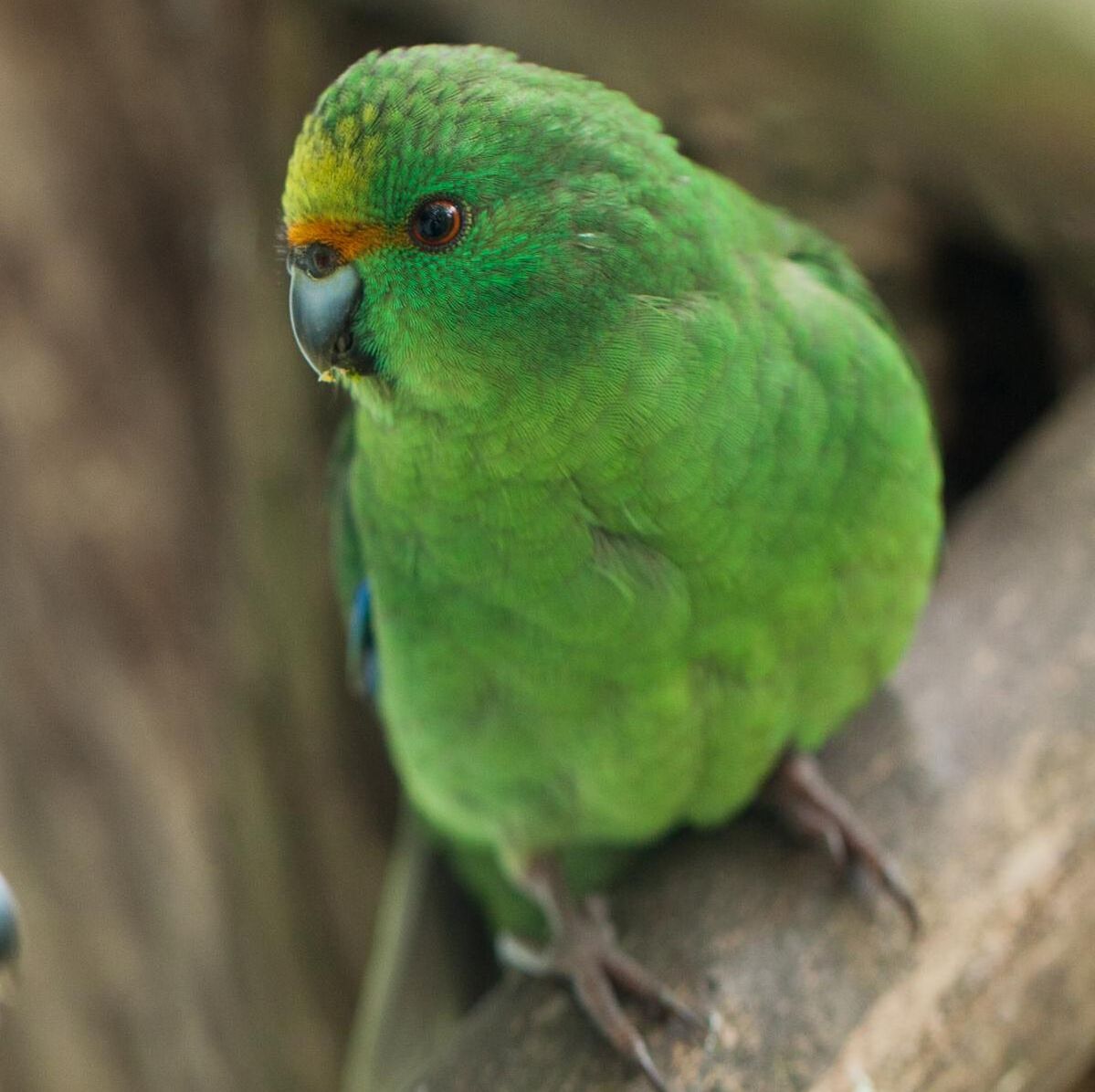Kākāriki of Aotearoa
I have explored the different types of parrots in the kākāpō post, so I won’t go into that here. I grew up signing the rainbow in Te Reo at primary school, so for me, “kākāriki” means “green”, and “karaka” means orange, so this bird’s name is a bit confusing for my super-basic Māori language skills!
As it turns out, the colour “kākāriki” is named after the bird, just like the colour “karaka” means orange because the name comes
from the colour of the fruit of the karaka tree.
The etymology is: from kākā, parrot + riki, small. The word is also used to refer to the colour green because of the birds’ predominantly green plumage.
Source:
Wikipedia
The word “kākāriki” also has several other uses in Te Reo – click here to read about them.
Sources and resources
Malherbe’s parakeet (Cyanoramphus malherbi), usually known as the orange-fronted parakeet or in Māori, kākāriki karaka, is a small parrot endemic to New Zealand. In New Zealand it is always known as the orange-fronted parakeet, a name it shares with a species from Central America, while in the rest of the world it is known as Malherbe’s parakeet.[3] Restricted to a few valleys in the South Island and four offshore islands, its population declined to around 200 in the 1990s, and it is now considered critically endangered.Source:
Wikipedia

Red-crowned parakeet (Cyanoramphus novaezelandiae)
|

Adult Malherbe’s showing its orange frontal band
|
This budgerigar-sized parakeet is usually quiet and difficult to observe. A loud brief chatter or quieter contact call may give away its presence, but locating the bird can be extremely difficult. Orange-fronted parakeets are often confused with yellow-crowned parakeets. Formerly occurring throughout New Zealand, orange-fronted parakeets are now confined to four South Island beech forest valleys. Captive-reared birds have also been released on four offshore islands.Source:
NZ birds online
Reports from the 1800s show that orange-fronted parakeets were once found throughout New Zealand. However, their distribution has reduced dramatically over the last century and the orange-fronted parakeet is now our rarest parakeet and forest bird in New Zealand.
The remaining populations are all within a 30 km radius in beech forests of upland valleys within Arthur’s Pass National Park and Lake Sumner Forest Park in Canterbury, South Island. The easiest place to see them, although still difficult, is in the Hawdon valley in Arthur’s Pass National Park.
Although kākāriki karaka are now confined to these few valleys, historic records suggest that in the later years of the 1800s, when beech seed was bountiful during mast years, the parakeets would have a breeding boom and disperse onto the Canterbury Plains.
Source:
DOC

Orange-fronted parakeet. Captive adult male eating fruit. Isaacs Wildlife Trust. Image © John Kearvell by John Kearvell
|

Orange-fronted parakeet. Adult at supplementary feed station. Hawdon Valley, Arthur’s Pass, September 2017. Image © Ben Weatherley by Ben Weatherley
|

Orange-fronted parakeet release at Blumine Island Image: Bill Cash
|

Lucy Garrett checking an active nest, Poulter Valley Image: John Kearvell
|
Identifying the kākāriki karaka

Orange-fronted parakeet. Adult male at nest entrance. Hawdon Valley, Arthur’s Pass, January 2013. Image © Sabine Bernert by Sabine Bernert www.sabinebernert.fr
|

Orange-fronted parakeet. Front view of captive adult male in flight. Isaacs Wildlife Trust. Image © John Kearvell by John Kearvell
|
Reading the descriptions of the birds is a really important way of identifying the details that must be captured in my sketches.
Cyanoramphus malherbi is a medium size parrot, approximately 20 centimetres long. Its body is primarily a bright blue-green, with azure blue primary covert and leading edge feathers on its wings.
It has a distinctive (and diagnostic) orange frontal band on its yellow crown, but this is absent in juvenile birds, which have fully green heads. The orange frontal band begins to develop when the bird is 2–5 weeks old. Its rump has orange patches on the sides. Colouration in males tends to be brighter, and juveniles are distinctly duller.
The only reliable features that separate mature orange-fronted parakeets from the similar yellow-crowned parakeet (C. auriceps) are the colour of the frontal band and rump.
Source:
Wikipedia

Orange-fronted parakeet. Captive juvenile female less than 1 month old. Isaacs Wildlife Trust, February 2012. Image © Sabine Bernert by Sabine Bernert www.sabinebernert.fr
|

Orange-fronted parakeet. Captive adult male showing diagnostic orange flank patch. Isaacs Wildlife Trust. Image © John Kearvell by John Kearvell
|
Time to draw
A first quick sketch to decide on what I was going to draw:
I started out by checking if the colours worked with the
kakapo design – and no, they are quite different colours, although there were a couple of shades in common.
I was cranking to get this all coloured and finished in time for the market this afternoon, and I juuuust made it!

























